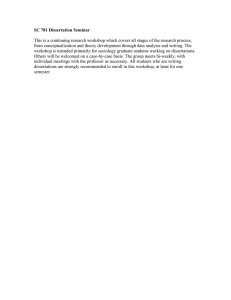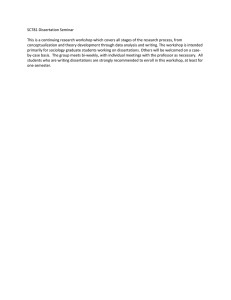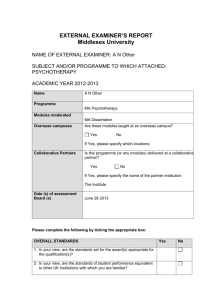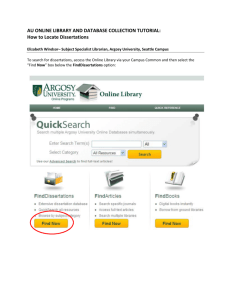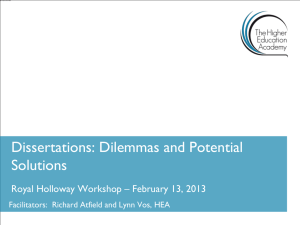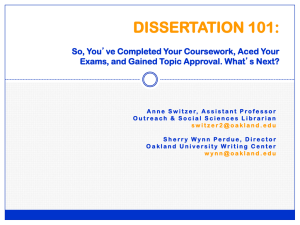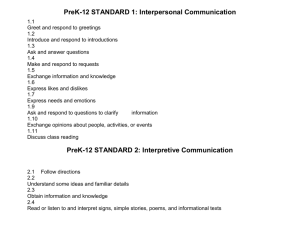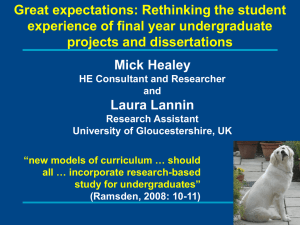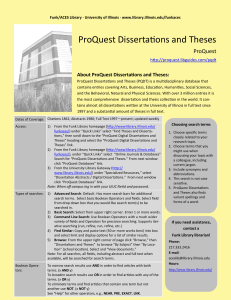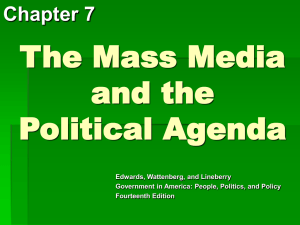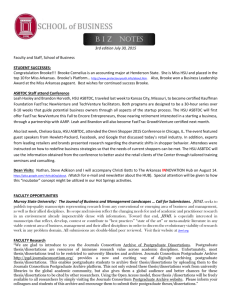Document
advertisement
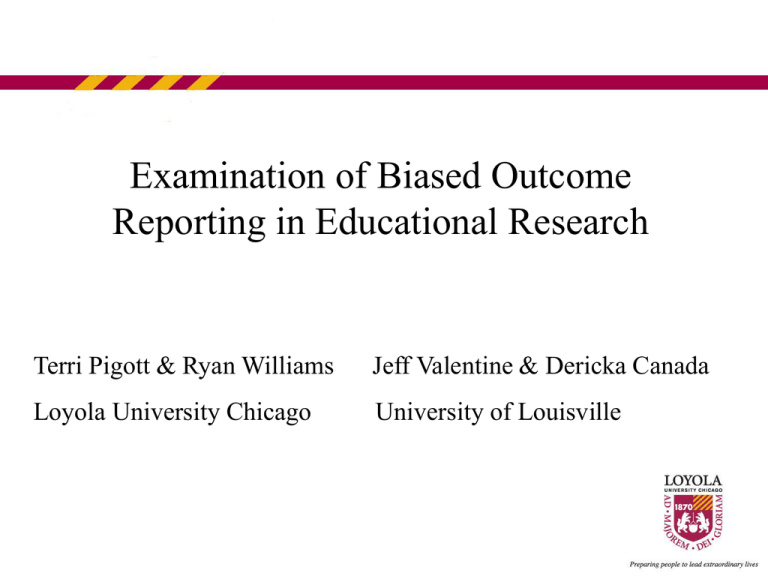
Examination of Biased Outcome Reporting in Educational Research Terri Pigott & Ryan Williams Jeff Valentine & Dericka Canada Loyola University Chicago University of Louisville Publication bias in research • Well-known tendency for studies to be published in peer-review journals when the results are statistically significant • Publication bias can also work within published studies – Important details about the study methods are missing – Outcomes gathered in the original research are not reported in the published work Biased outcome reporting • Identified problem in clinical trials in medicine,e.g., Vedula, Bero, Scherer & Dickersin (2009), NEJM. – Studies of off-label use of gabapentin – Compared outcomes described in published reports with those described in internal research documents from the industry sponsor – Many documents for study obtained as a result of litigation against drug companies Figure 1. Vedula et al. (2009) Vedula et al. (2009) • In the example here, the published reports lead to a more favorable assessment of gabapentin’s efficacy for unapproved indications Implications for Inferences • If published studies selectively report outcomes of an intervention, any inferences drawn about the effects of an intervention will also be biased • Extent of this problem depends on the relation between the observed and the unobserved outcomes – If strong (e.g., two highly correlated measures of a construct), then problem is likely minimal – If weak (e.g., two measures of two different constructs) then problem will lead to biased inferences • What evidence do we have in education research of selective outcome reporting? Our study • No research registries in educational research • Instead, we focused on dissertations completed between 2001 and 2005 at the 96 Carnegie designated Research Universities/Very High Research Activity (RU/VH) • For this presentation, we randomly sampled 26 of the 96 RU/VH institutions Methods • Using DAI, we searched for dissertations completed between 2001 and 2005 at each sampled RU/VH institution with keyword “Education” • Using the abstracts, we identified those reporting on an intervention for student outcomes in PreK – 12 • We focused on interventions for ease of identification of primary outcomes Methods (continued) • After identifying the set of dissertations that studied an intervention with PreK-12 students, we searched for a published version of the dissertation primarily using Google Scholar • In the matched dissertations, we coded each outcome and its associated p-value. • In the matched publication, we coded whether each outcome was reported Results • This sample contains 4,102 dissertations • Of those, 199 (5%) were intervention studies with PreK-12 student outcomes • Of these 16 (8%) had an identifiable and comparable published outcome that met our inclusion criteria Results Continued • Our search thus far has located 16 studies with 209 different treatment outcomes • Statistically significant outcomes were more likely to appear in the published version of the study than were non-statistically significant outcomes (p = .003) – OR = 2.34 with CI95% (1.35, 4.14) – RR = 1.48 with CI95% (1.15, 1.92) Next Steps • Next steps • Complete coding of all 96 university dissertation sets • Multilevel analysis to model bias across studies • Some evidence of outcome bias in education research • What are the practical implications? Observations about Ed Research • Few dissertations focus on interventions for PreK-12 students – IES reports majority of their applications and funded studies are Goal 1 and 2 (exploration and development) and not Goal 3 or 4 (testing an intervention strategy and scaling up) – Why are we seeing few intervention studies in education?
